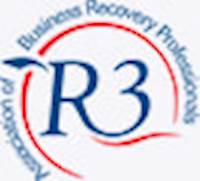Many business owners in the UK may be familiar with the term ‘dissolution’. Companies House maintains a register of companies, and dissolution is the process through which the directors of a company can strike off the company’s name from this register.
There can be many scenarios that drive the company directors to close down their businesses. Depending on the reason why, they can either dissolve the company or, in most cases, will need to consider a liquidation process.
Some of the common reasons for company closure:
- The directors of the company wish to retire and close down the business
- There may be no one available to take over the running of the company from the directors
- The product or service provided by the company may have become redundant in the marketplace and the directors wish to stop trading
- The directors of the company may have started other businesses which they wish to concentrate on
- The company may have been set up to perform a specific project, and the project has now come to an end
- The directors of the company may have personal or family reasons that make it imperative for them to close the company down and concentrate on other things
Company Dissolution
Company dissolution is a process whereby the directors can file a form at Companies House, pay a small fee and about 3 months later the company will be dissolved. There are certain conditions and formalities which need to be followed and providing they are met this is a very quick and cost effective way to close the company down as it does not need to involve the employment of external professionals.
However, it is only relevant in a very small number of cases and there are many more things to consider (i.e. strike off rejection / company restoration) on top of those set out in the guidance at Companies House.

Dissolution v Liquidation - What are the differences?
Solvent Company Liquidation
When a decision has been taken to wind up the company, a formal process needs to be followed. If there is a surplus of assets then this is called a members voluntary liquidation (MVL). This involves holding a board meeting of directors and then a general meeting of members. At the meeting of members, a Declaration of Solvency is presented which is simply a balance sheet which is made up to the latest date possible which must be no more than five weeks prior to the meeting. A resolution to wind up is then put to the meeting and once it is passed the company is in liquidation.
The shareholders will then appoint an insolvency practitioner, also known as a liquidator. The liquidator will manage the process of liquidation. Initially they will notify all stakeholders and advertise the resolution to wind up the company in the London Gazette, along with a notice for creditors to submit their claims. The Declaration of Solvency and other statutory documents will also be filed at Companies House shortly after appointment.
Insolvent Company Liquidation
A company can be insolvent for two reasons. It may owe more money than the value of its assets or it simply may be unable to pay its debts as and when they fall due. In both cases a creditors voluntary liquidation (CVL) or compulsory liquidation (CL) can be driven either by the directors on a voluntary basis or by the creditors using the courts.
Creditor’s Voluntary Liquidation (CVL)
- Although it is called Creditors Voluntary Liquidation the process is driven by the directors and shareholders who will agree the timescale with the proposed liquidator.
- The directors hold a board meeting to start the process and a decision procedure is chosen and creditors duly notified.
- The decision procedure may be deemed consent which means the liquidator proposed by the directors is automatically appointed unless a certain number of creditors object and call a physical meeting. Alternatively a virtual meeting may be called.
- Prior to the decision date creditors must receive a director’s report and a copy of the Statement of Affairs which the insolvency practitioner will help the director to draft.
- On the decision date a liquidator is appointed who will notify creditors and deal with filing the relevant documents at Companies House and advertising in the London Gazette.
- The liquidator will deal with realising the company’s assets, agreeing creditors’ claims and where there have been sufficient assets, paying a dividend to creditors.
- In some cases, the directors can make a claim for Redundancy Pay and other employment related claims.
Compulsory Liquidation (CL)
- The process is normally triggered by a creditor presenting a winding up petition to the court, due to the company’s inability to pay its debts as and when they fall due. It is normally issued after a company has failed to pay a Statutory Demand within 21 days.
- A director can also ask a court to wind the company up but this is normally where there is a dispute between the shareholders and there is deadlock in management as nobody has overall control; so the 75% required to pass a winding up resolution cannot be reached.
- The process is reliant upon the time it takes to obtain a hearing date and once the company is in liquidation the Official Receiver initially becomes liquidator.
Directors’ Redundancy Claims During Liquidation
In both types of insolvent liquidation the directors of the company may be able to make a claim for Directors’ Redundancy Pay through the Redundancy Payments Service. The claim can only be filed once the company is in liquidation.
A redundancy claim is not possible with a MVL or when a company is dissolved as it would be deemed that the director has resigned rather than been made redundant. In the case of a CVL, the director loses their job through a forced closure of the company and therefore is made redundant.
The claim needs to be made within 12 months from the time the company entered liquidation. Directors are also able to claim other employment related payments such as notice pay, holiday pay and arrears of wages. The average Director’s Redundancy claim across the UK is approximately £9,000, while a maximum amount of £14,670 can currently be claimed by law at this point.
Talk to our team of insolvency experts before closing your company
If you would like to know more about the differences between a dissolution or a liquidation and are concerned which process would be best for your company please do call for free, no obligation and licensed advice on 0121 201 1720. Alternatively, we can contact you if you would like to complete our contact form below.



